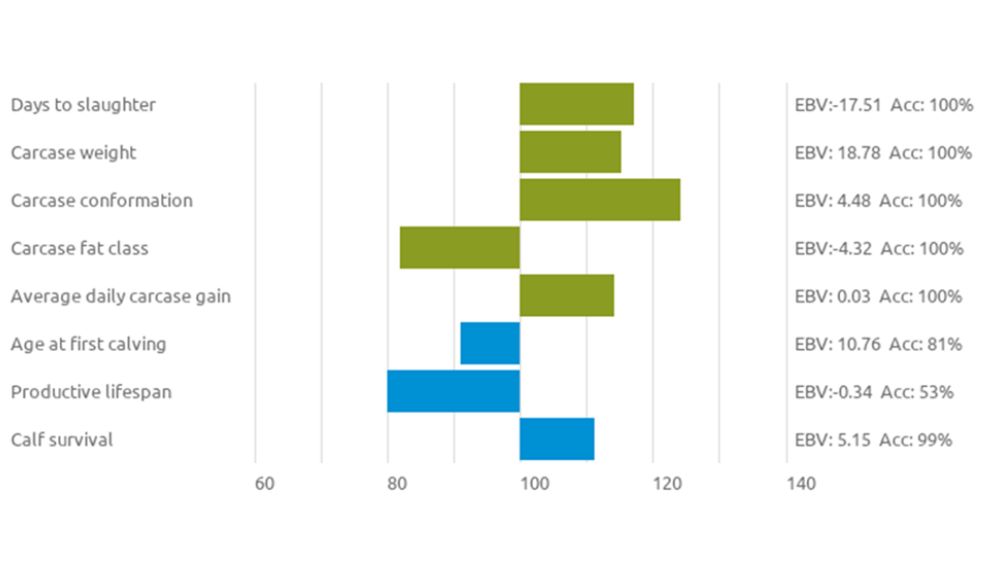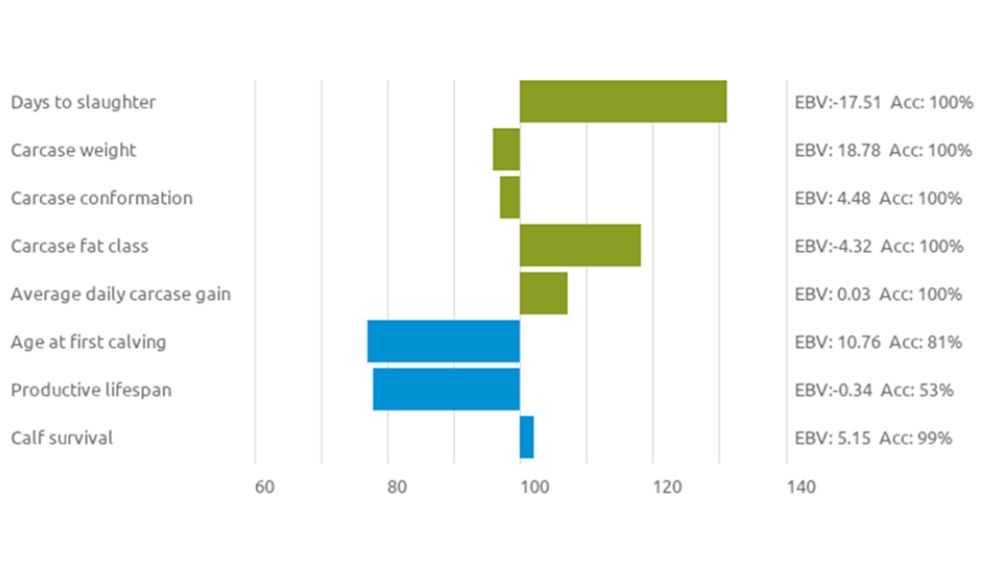Breeding decisions: More than just choosing a breed
Tuesday, 3 September 2024
Harriet Bunning, AHDB’s Lead Animal Genetics Expert, shares the latest news on National Beef Evaluations.
If you’re choosing your next bull by just his breed or looks, you’re missing out on a lot of information. We have published the latest results from our National Beef Evaluations (NBE), which use national data to measure the genetic potential of beef cattle for eight carcase and maternal characteristics.
Any animal, of any breed or crossbred, whether they are pedigree-registered or not, can receive results, as long as we have enough data from the British Cattle Movement Service (BCMS) and abattoirs to produce a reasonably accurate measure.
For the first time, results for animals of all beef breeds will be comparable. This means you can now compare the genetic potential of an Angus bull with a Charolais, enabling you to select the best bull for your system, rather than needing to choose a breed first.
This is important, as our results show that, although some breeds outperform others for specific characteristics (for more information, see our breed rankings) on average, we almost always see bigger differences within breeds than between them. This really highlights that selecting the right bull is more important than selecting the right breed.
For farms where a specific breed is important, for example due to local importance or the specific requirements of a supply chain, there is a new feature that allows you to choose how to view the results for an animal.
You can select either “Across Breed” or “Within Breed”. This changes the scale of the chart, allowing you to see where the animal falls compared to all other beef animals, or just within their own breed.
This is demonstrated in Figures 1 and 2 for Newpole Kojak, a widely used British Blue sire.
Comparing him to all beef breeds, he has high genetic potential for days to slaughter, carcase weight and conformation (shown by large bars to the right for each trait in Figure 1). This is unsurprising as we know that, on average, Blues are a larger breed with more extreme muscling.
For Kojak, his position within his breed is quite different to that across all breeds. In particular, he is much closer to the average genetics within his breed for both carcase weight and conformation (both having small bars, slightly to the left in Figure 2), whereas he is a top performer for days to slaughter within the breed (large bar to the right). This might make him attractive to those who want to use a Blue sire but who want less extreme calves in terms of size and muscling.
Figure 1: Across Breed chart for Newpole Kojak, a British Blue sire

Figure 2: Within Breed chart for Newpole Kojak, a British Blue sire

Topics:
Sectors:

